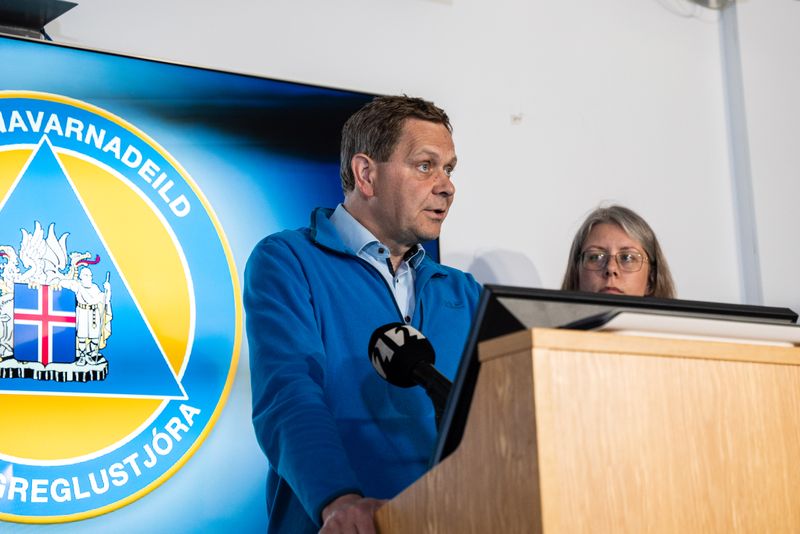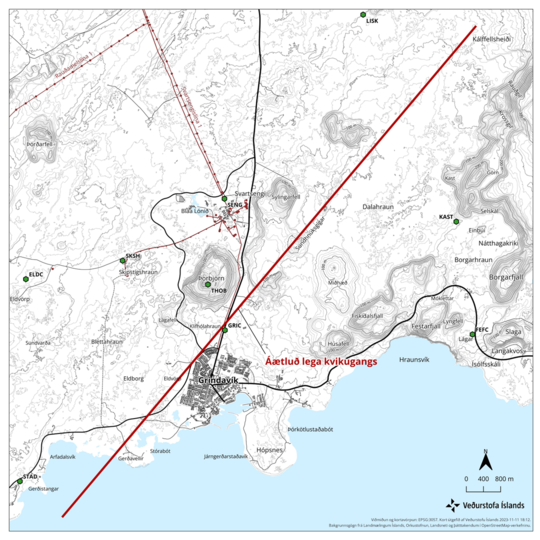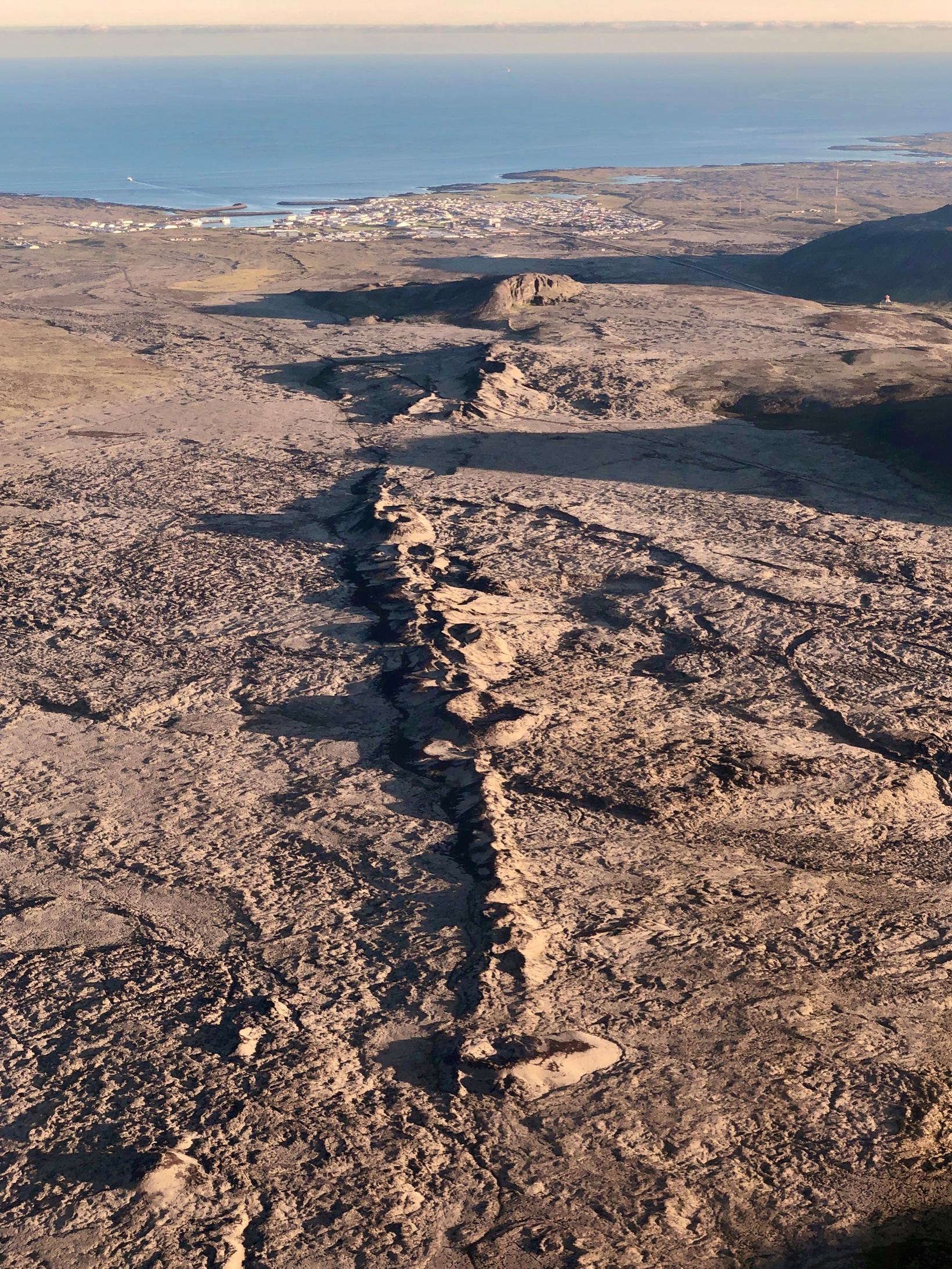The
convoluted stuff: There could still be an eruption at the
original site of concern (autotranslated).
You know how, Friday, everyone was on top of things, keeping close watch on an area near Mt. Thornbjorn, the Blue Lagoon, and the Svartsengi geothermal power plant?
And then suddenly seismicity got intense and everybody was suddenly worried about a slightly different area -- nearby Grindavik -- and then the magma tunnel formed?
That incredible rush and the unexpected (but well carried out) evacuation of town were unusual in Iceland, which is possibly the most well prepared and well monitored volcanic region on Earth.
A few comments online and a little reading gave me the general gist, and I believe that what happened Friday was that
the rifting process that had allowed magma to approach the surface in the original area of concern
jumped and opened up a new dike that eventually went under Grindavik and on out underneath the sea for a few miles before stopping.
Jumps do happen, especially in Iceland, which is a
complex place (jargon alert, but they mention the big-picture rift jumps three times).
What I understand Dr. Höskuldsson to be saying (here's the
link again) is, "Uh, guys, it's still back here, too, and it could erupt."
Why not? Those InSAR images show broad-scale inflation of a
large area, and IMO has mentioned a couple of times in their reports that the rise has been uniform, not isolated in one place (as a dike), which would look like this (tightly packed lines in this example from Nyiragongo, 2021, from extension in the western arm of the continental East African Rift):
The thing is, Reykjanes geology is so complex that there are no easy, straight-forward predictions possible -- especially in an area that has been volcanically silent for so long (which is why so many people moved in to exploit the peninsula's advantages, increasing the risk).
Icelanders are handling this really well, but they do have a challenge on their hands right now -- and they
are up to dealing with it.
But as Mount St. Helens "said" in that tweet up above, this is not the time for volcano tourism because this is not in the boonies as the earlier Fagradalsfjall Fires were.






